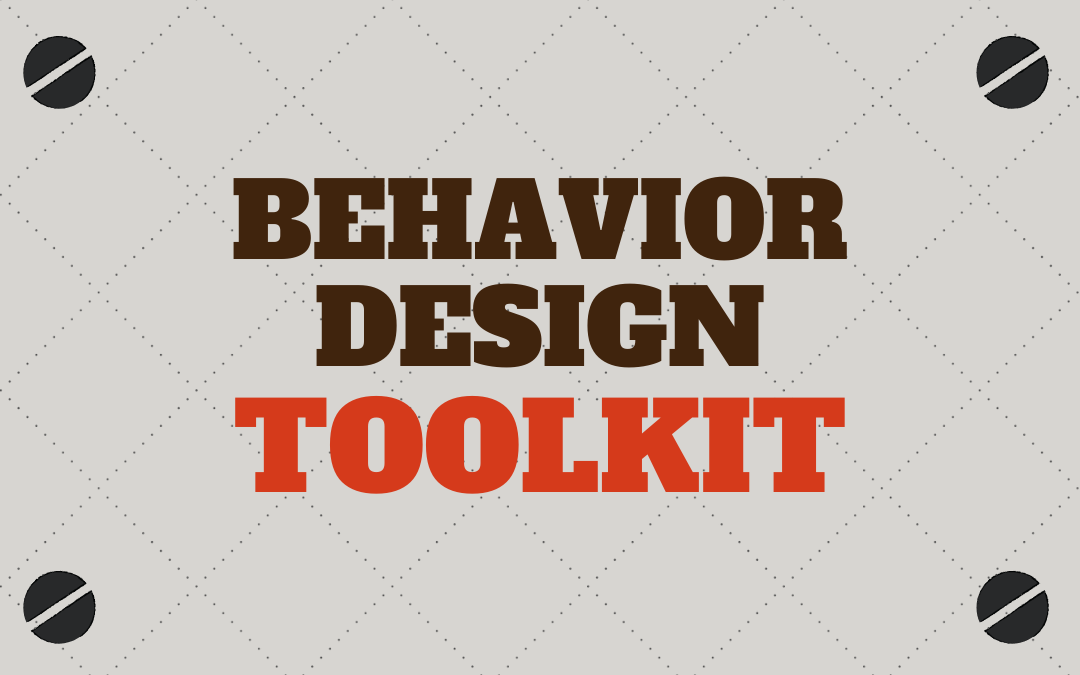Product design is one of the most complicated disciplines there is. This is because of the nature of our subject: people. All of us are infinitely complex and unpredictable. Our behavior depends on a myriad of factors, each of which is constantly in flux.
But luckily for us, there are still fundamental laws of human behavior that can guide our product design process: the laws of behavioral design. For example, if you deeply understand that people are lazy and will work to do as little mental work as possible, it will change the way you envision and design your product or service. If you understand that people are forgetful and powerfully directed by their environments, it will also change the way you prioritize your features.
The goal of my module is to give you a small toolkit that you can use to solve any product conundrum that comes your way.
Behavior Model
We’ll start with two overviews of BJ Fogg’s Behavior Model. The first overview is written by BJ himself at behaviormodel.org. On the site, he outlines the basics of the model and then delves into each of the model’s components in much more detail.
The second overview is written by yours truly. In the article, I review the behavior model in plain English with a few examples. After you read through each of these resources, you’ll be able to think about behavioral design in a much more granular manner, breaking down any behavior problem into its three component parts:
- Trigger (cue)
- Ability
- Motivation
This will give you a vision of humanity and our mental life that will allow you to put your habit formation work into context. Once you understand on an intuitive level that we’re energy conserving creatures that are good at thinking in concrete terms and constantly drawn to multitasking (where we waste away much of our time), you’ll start to develop products that fit better with the reality of people’s physical and mental lives.
Look at the behaviors your product asks its users to perform. Does it follow the principles of habit formation? If not, how could you change it so that it does?
Habit Formation
At this point, you have a basic understanding of what needs to occur for a singular instance of behavior to occur. However, as product designers we want people to use our product regularly–we want to make sure that our users perform our product’s key behaviors on a daily, or weekly, basis. In other words, we want them to form a habit around our product.
One of the best overviews of the habit formation process is Charles Duhigg’s book The Power of Habit. However, I’m not going to ask you to read a 416 page tome as part of this course (though I encourage you to). Instead, I recommend that you check out the article he wrote for The New York Times Magazine. It will give you a great, well-written overview of the science of habit formation and how it’s successfully used in a real world context (a department store).
For good measure, I’m also throwing in a fun little article I wrote earlier this year on “Four Principles of Habit Formation.” To write this article, I thought about the key behavioral/psychological quirks that are the foundation for our, often unfortunate, behavioral predilections. I boiled everything down into four quirks:
- We’re lazy
- We’re bad at thinking about abstractions (but do it all the time, anyways)
- We’re bad at multitasking (but do it constantly)
- We’re usually lazy for a reason (energy/health issues)
This will give you a vision of humanity and our mental life that will allow you to put your habit formation work into context. Once you understand on an intuitive level that we’re energy conserving creatures that are good at thinking in concrete terms and constantly drawn to multitasking (where we waste away much of our time), you’ll start to develop products that fit better with the reality of people’s physical and mental lives.
Look at the behaviors your product asks its users to perform. Does it follow the principles of habit formation? If not, how could you change it so that it does?
Nine User Experience Tips to Rule Them All
Finally, we’ll end the module with a bit of fun–my nine user experience tips. These are the most fundamental pieces of advice I could think of, based upon my years of UX design work on dozens of products.
They’re simple (maybe too simple), but I still hope you find them helpful. All of them can be traced to some psychological finding or truism and I’ve heard from many people that they’ve been enlightening and helpful in the heat of the messy design process. I worked hard to pick out the nine most common and impactful mistakes that product designers make and come up with a behavioral design rule to protect against them.
If you have ideas for new rules, or don’t agree with one that I’ve outlined, please let me know. I’m always up for a good debate and, if warranted, a revision to my list :).
Which of the 9 design mistakes have you found yourself making in your own work? How could you correct them using the tips given?
I hope you enjoy the articles. Want more? Check out Nir’s free Product Psychology course.
Related Articles
- Schedule Maker: a Google Sheet to Plan Your Week
- Cancel the New York Times? Good Luck Battling “Dark Patterns”
- How to Start a Career in Behavioral Design
- A Free Course on User Behavior
- User Investment: Make Your Users Do the Work
- Variable Rewards: Want To Hook Users? Drive Them Crazy
- The Hooked Model: How to Manufacture Desire in 4 Steps

